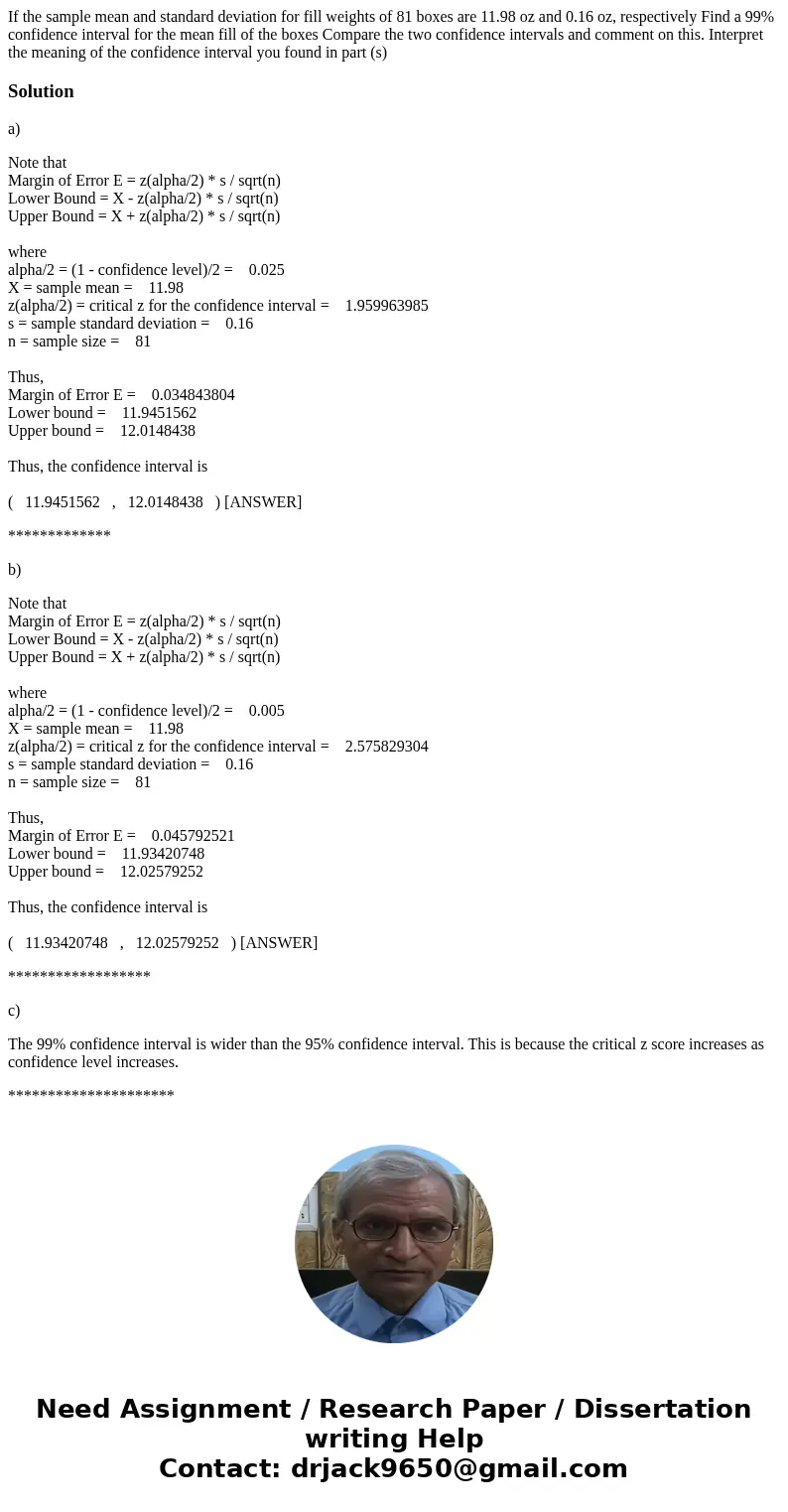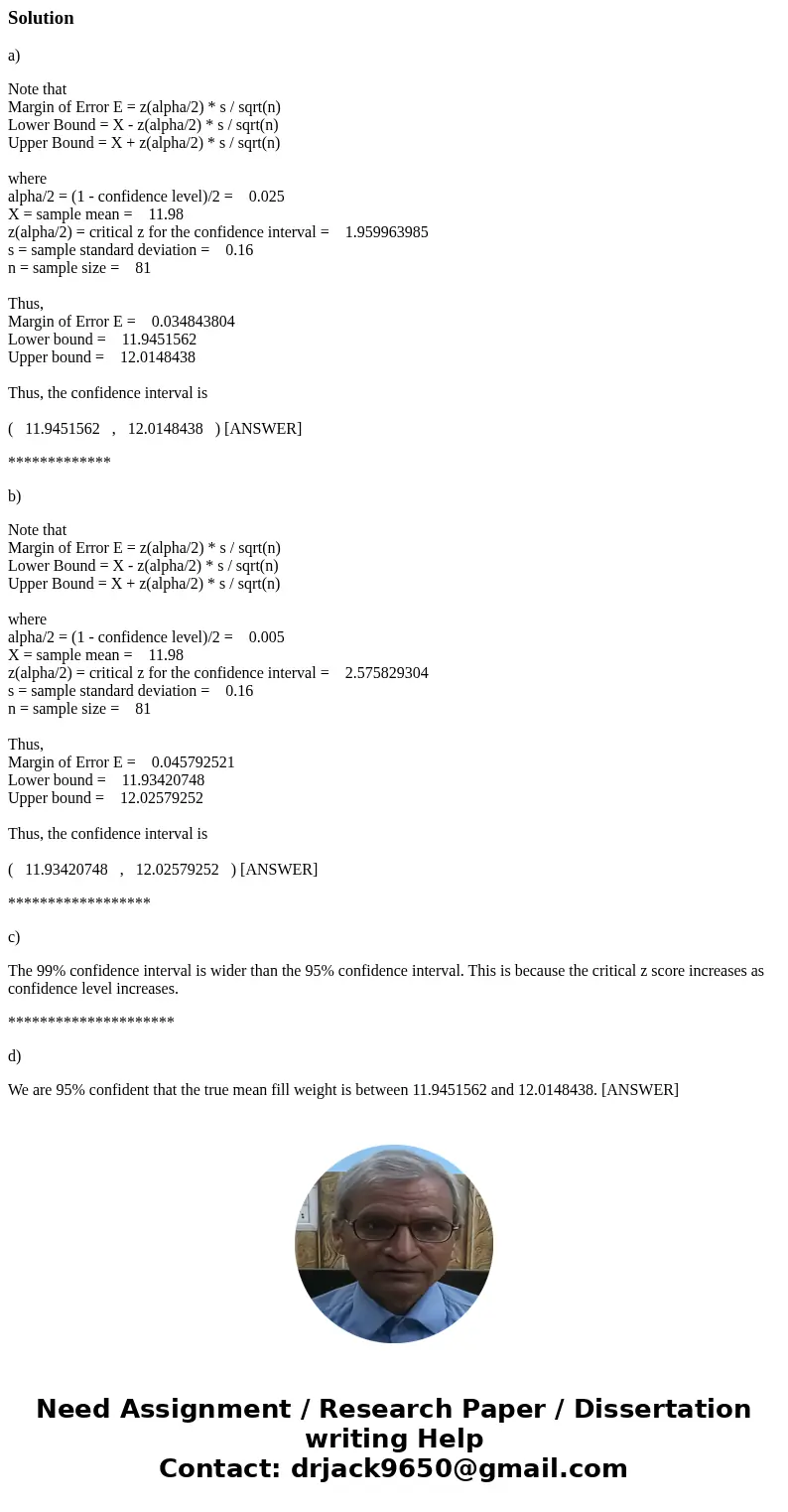If the sample mean and standard deviation for fill weights o
Solution
a)
Note that
Margin of Error E = z(alpha/2) * s / sqrt(n)
Lower Bound = X - z(alpha/2) * s / sqrt(n)
Upper Bound = X + z(alpha/2) * s / sqrt(n)
where
alpha/2 = (1 - confidence level)/2 = 0.025
X = sample mean = 11.98
z(alpha/2) = critical z for the confidence interval = 1.959963985
s = sample standard deviation = 0.16
n = sample size = 81
Thus,
Margin of Error E = 0.034843804
Lower bound = 11.9451562
Upper bound = 12.0148438
Thus, the confidence interval is
( 11.9451562 , 12.0148438 ) [ANSWER]
*************
b)
Note that
Margin of Error E = z(alpha/2) * s / sqrt(n)
Lower Bound = X - z(alpha/2) * s / sqrt(n)
Upper Bound = X + z(alpha/2) * s / sqrt(n)
where
alpha/2 = (1 - confidence level)/2 = 0.005
X = sample mean = 11.98
z(alpha/2) = critical z for the confidence interval = 2.575829304
s = sample standard deviation = 0.16
n = sample size = 81
Thus,
Margin of Error E = 0.045792521
Lower bound = 11.93420748
Upper bound = 12.02579252
Thus, the confidence interval is
( 11.93420748 , 12.02579252 ) [ANSWER]
******************
c)
The 99% confidence interval is wider than the 95% confidence interval. This is because the critical z score increases as confidence level increases.
*********************
d)
We are 95% confident that the true mean fill weight is between 11.9451562 and 12.0148438. [ANSWER]


 Homework Sourse
Homework Sourse